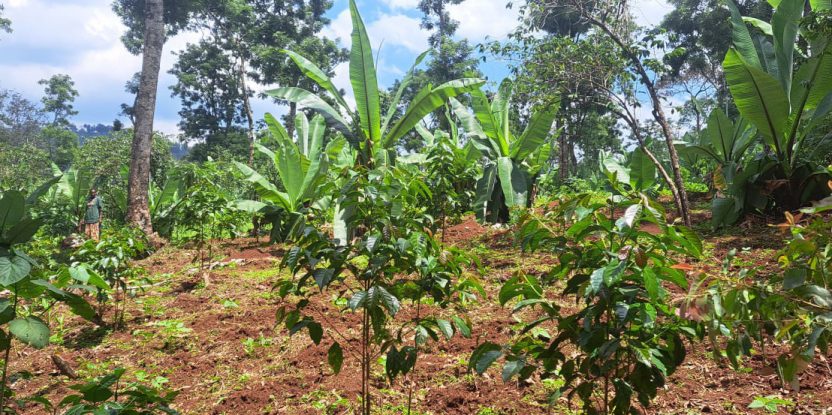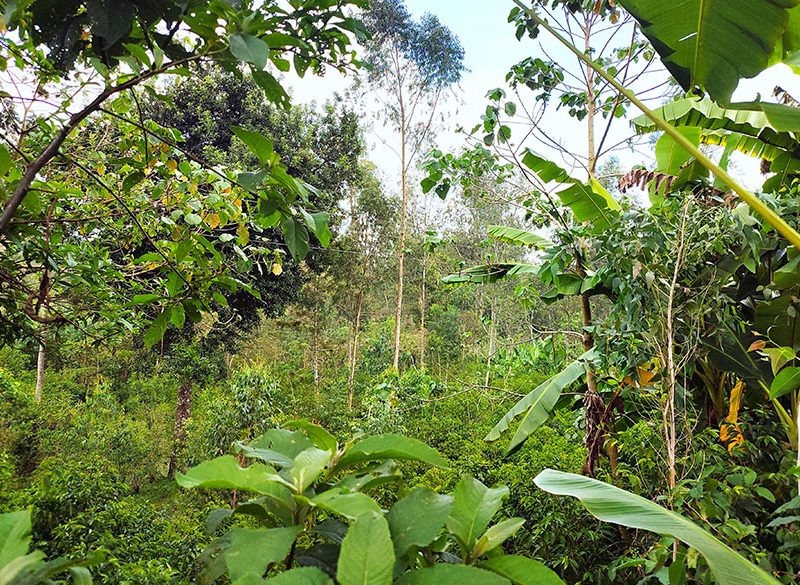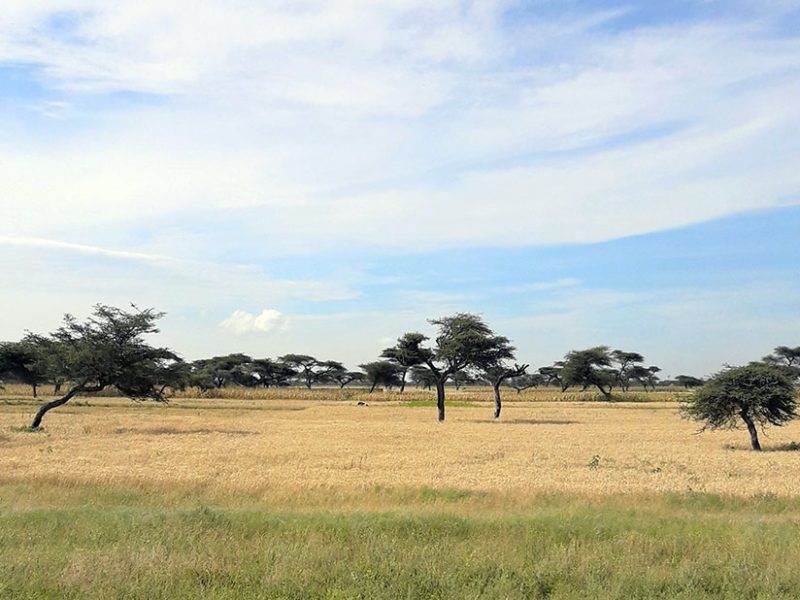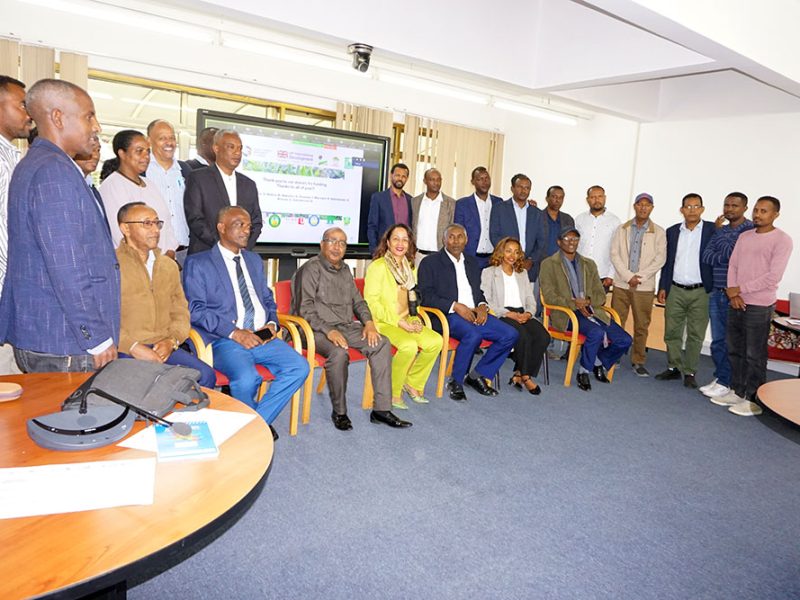
In a world of increasing populations, dwindling biodiversity and growing climatic challenges, agroforestry – a multifunctional land management system that integrates trees with crops and/or pasture – is being recognized for its potential, and has been dubbed “the future of global land use.”
Ethiopia, a large and diverse country that spans 1.1 million square kilometres and a wide range of ecosystems and cultures, stands to benefit particularly from a widespread transition towards agroforestry. Most of its farmers are smallholders that are currently engaged in monocropping, but evidence suggests that agroforestry could boost their adaptation and resilience to the impacts of climate change, improve their food security and nutrition; protect and enhance biodiversity and the ecosystem services it sustains; improve livelihoods in rural areas, and achieve transformative change in agricultural practices towards sustainable development.
To date, agroforestry uptake within the country varies considerably from region to region. In Gedeo Zone in the Southern Ethiopia region, for instance, it has been widely practiced for generations. The Gedeo Cultural Landscape, which was recently designated as a UNESCO World Heritage site, is testimony to a long-standing Indigenous agroforestry tradition whereby layers of mature trees are cultivated to provide shelter for enset (false banana, Ensete ventricosum), coffee and other food crops. This symbiotic system, which links culture and nature, is strengthened by the traditional knowledge systems of the Gedeo community, and has the capacity to sustain livelihoods while ensuring environmental sustainability. By contrast, in the highlands of northern Ethiopia, there is little community knowledge about the benefit of planting and protecting trees on farmland and homesteads.
In this context, the Centre for International Forestry Research and World Agroforestry (CIFOR-ICRAF), in collaboration with the Global Center on Biodiversity for Climate (GCBC), is seeking to catalyze the adoption of agroforestry through a new research-in-development project, Multifunctional Agroforestry for Enhanced Biodiversity, Improved Livelihood, and Resilient Landscapes in Ethiopian Highlands. The three-year project will be implemented in four regions, in partnership with Tree Aid and supported by Ethiopian Forestry Development (EFD), Ethiopian Biodiversity Institute (EBI), and other partners – including four universities.
“The project aims to reduce poverty, enhance food security, improve resilience to climate change and conserve biodiversity,” said principal investigator Aster Gebrekirstos, a CIFOR-ICRAF senior scientist, during an inception and stakeholder consultation workshop in Addis Ababa on 28-29th March 2024. “It works to plant the right trees in the right places to support landscapes and agroforestry systems.”

A traditional Gedeo agroforestry system in southern Ethiopia. Photo by Aster Gebrekirstos/CIFOR-ICRAF
The project also aims to investigate why agroforestry is not yet being adopted widely in Ethiopia, and to provide better insights into the productive and environmental performance of agroforestry systems, socio-cultural and political prerequisites for their establishment – and the trade-offs farmers face in choosing between land use practices.
Trans-regional studies will be carried out to identify national commonalities and local specifics, and investigate both traditional (such as Gedeo) and introduced agroforestry as case studies to better assess the potential for traditional practices and Indigenous knowledge to improve adaptation to critical environmental change and biodiversity loss. “The lessons learned from the South and North will be used to create and scale up context-specific model mosaic agroforestry systems across Ethiopia,” said Aster.
As well as promoting agroforestry adoption, the project must also look critically at the sustainability or otherwise of current agroforestry practices within the country, said EFD’s deputy director general, Motuma Tolera. For instance, increasing population pressure may be affecting the sustainability of Gedeo agroforestry: Motuma cited research noting that “all of the Faidherbia albida [white acacia] trees remaining on farmland in the Central Rift Valley are older trees: farmers do not give young trees the chance to regenerate, and without regeneration, the sustainability of the agroforestry practice will be under question.” He expressed hope that project researchers work closely with farmers to put forward a minimum number of trees per hectare of farmland, so that EFD can influence policy to this end.

Parkland agroforestry in Ethiopia’s Central Rift Valley. Photo by Eyob Getahun/CIFOR-ICRAF
Motuma also cited the importance of learning more about species’ climate adaptability. “Most often, we talk about the role of trees in climate change mitigation and adaptation,” he said. “Yet the trees and the biodiversity itself are suffering from climate change. There will be shifts in the natural habitat; there will also be extinctions. Which of these species are going to persist within the changing climate?”
Zooming out to the bigger picture, EFD’s director general, Kebede Yimam, said the project “is crucial for ongoing and future efforts in forest and landscape restoration, biodiversity conservation and poverty alleviation…It will fill some of the knowledge and capacity gaps in agroforestry science and practices, so project sites and regions will have similar planning, implementation and monitoring capacities that are also tailored to their specific contexts.”
“By promoting the integrity of remaining habitats, agroforestry supports the conservation of biodiversity,” said Feleke Woldeyes, EBI’s deputy director general. “Multistakeholder engagements in the promotion of agroforestry systems will have a considerable role in conserving biodiversity across landscapes, and maintaining environmental health and the resource base.”

Participants in the workshop, most of whom are stakeholders in the project. Photo by Eyob Getahun/CIFOR-ICRAF
Acknowledgments
The Global Center on Biodiversity for Climate (GCBC) is funded by the UK’s Department for Environment, Food and Rural Affairs, working in partnership with DAI Global as the Fund Manager Lead and the Royal Botanic Gardens, Kew as the Strategic Science Lead.
We want you to share Forests News content, which is licensed under Creative Commons Attribution-NonCommercial-ShareAlike 4.0 International (CC BY-NC-SA 4.0). This means you are free to redistribute our material for non-commercial purposes. All we ask is that you give Forests News appropriate credit and link to the original Forests News content, indicate if changes were made, and distribute your contributions under the same Creative Commons license. You must notify Forests News if you repost, reprint or reuse our materials by contacting forestsnews@cifor-icraf.org.